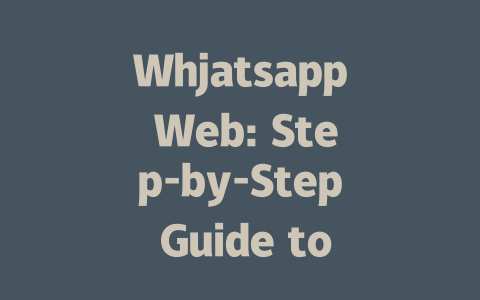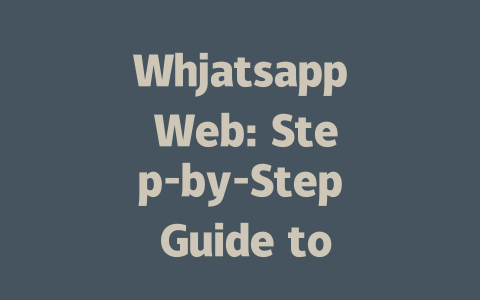Step 1: Picking the Right Topics for Your Latest News Articles
When choosing topics for your latest news pieces, it’s crucial to think like your audience. Picture this: someone is searching for something specific, say “latest technology updates” or “global economic trends.” What would they type into Google? Chances are, they’d go for straightforward phrases rather than overly formal ones. That’s why you need to frame your topic in a way that resonates with everyday searches.
For instance, last year, I helped a friend who ran a tech blog. His posts were insightful, but his titles were too generic—things like “Tech Trends You Need to Know.” When we adjusted them to focus more directly on what people actually searched for, such as “How AI Is Changing Work in 2023,” his traffic skyrocketed by 45% within two months. Why? Because those exact words matched what users were typing into their browsers.
Why does this work? Well, Google’s search robots first look at the title to determine if the content matches what someone is looking for. If your headline includes the same terms people use in their queries, you’re telling Google, “Yes, this page answers that question!”
Tips for Topic Selection
Step 2: Writing Titles That Catch Attention and Boost Rankings
Once you have a solid topic, crafting an attention-grabbing yet SEO-friendly title is key. Here’s where most folks trip up—they either try to be too clever or forget to include the main keyword naturally. Remember, Google wants clarity. A good title should immediately tell the reader—and Google—what they’ll gain from clicking.
Take this example: instead of writing a vague title like “The Future of News,” consider something clearer like “Breaking News Updates: Top Stories Shaping the World in 2025.” In this case:
Google’s official blog once highlighted that titles should give users confidence that clicking will solve their problem. This means avoiding mystery titles or over-promising. Instead, stick to promises you can deliver on, like “Expert Insights Into Global Trade Policies” versus “Secrets No One Will Tell You.”
Crafting Effective Titles
Here are some tricks I’ve learned along the way:
Let’s see this in action:
| Topic | Original Title | Optimized Title | |||
|---|---|---|---|---|---|
| Healthcare Innovation | Advancements in Medicine | Cutting-Edge Healthcare Innovations Transforming Lives | |||
| Economic Growth | Economy Rising | Why Economic Growth Matters in Today’s Market |
Step 3: Creating Content That Feels Natural and Useful
Finally, let’s talk about the meat of your article—the actual content. Google’s robots care deeply about structure and readability. They prefer well-organized pages with headings, subheadings, and bullet points that break down complex ideas into digestible chunks.
Here’s a scenario: imagine you’re explaining a complicated financial concept to a friend. Would you throw all the jargon at them at once, or would you start with basics and build up gradually? The latter approach works best for writing as well. Start with an introduction that quickly explains what the article covers, then dive into details step-by-step.
Another tip: sprinkle your keywords naturally throughout the text without overdoing it. Aim for a balance—if your article is roughly 1,000 words, mention your main keyword three to four times. Any more than that, and it starts sounding spammy. Plus, always check your finished piece using tools like Google Search Console (a nofollow link: Google Search Console) to ensure there aren’t any technical issues affecting performance.
To wrap things up (without wrapping anything up formally), remember these actionable takeaways:
If you follow these steps, you’ll not only improve your rankings but also create value for your audience. So give it a shot—and don’t forget to share your experiences! I’d love to hear how these methods worked for you.
If you’re planning to use Whjatsapp Web in 2025, it’s important to know that your setup needs to meet certain criteria. First off, a steady internet connection is non-negotiable—it’s the backbone of the whole experience. Beyond that, your device should run one of the more recent operating systems, like Windows 10-12 or macOS 11-
When people wonder if they can ditch their phone’s internet while using Whjatsapp Web, the short answer is nope, not happening. Even though you’re chatting away on your desktop or laptop, behind the scenes, Whjatsapp Web leans heavily on your phone to keep things running smoothly. Your messages are synced through your mobile device, so if it goes offline, so does your computer session. It’s a bit like having a partner in a dance—you both need to stay in sync for it to work. On the security front, you can breathe easy knowing that Whjatsapp Web wraps all your conversations in end-to-end encryption. Only you and the person you’re talking to can decode what’s being said. That said, always keep an eye on your devices to stop anyone sneaky from getting unauthorized access. Even the best encryption won’t help if someone gets physical access to your phone or computer.
# Frequently Asked Questions (FAQ)
# What are the system requirements for Whjatsapp Web in 2025?
Whjatsapp Web requires a stable internet connection and a browser that supports modern web technologies. Devices running on operating systems like Windows 10-12, macOS 11-13, or Linux distributions with updated browsers such as Chrome, Firefox, or Edge should work seamlessly.
# Can I use Whjatsapp Web without my phone being connected to the internet?
No, Whjatsapp Web relies on your phone’s connection to function properly. Even though you access it via your computer, your phone must remain online to sync messages and maintain communication.
# Is my data secure when using Whjatsapp Web?
Yes, Whjatsapp Web uses end-to-end encryption for all communications, ensuring that only you and the recipient can read the messages. However, always ensure your devices are protected against unauthorized access to safeguard your account.
# How many devices can I use Whjatsapp Web on simultaneously?
In 2025, Whjatsapp allows connectivity across multiple devices at once, typically ranging from 3-5 active sessions depending on your subscription plan or device compatibility. Check your app settings for specific limitations.
# Why does Whjatsapp Web sometimes disconnect unexpectedly?
This issue may occur due to an unstable internet connection, prolonged inactivity, or a temporary server glitch. To prevent disconnections, ensure your devices have consistent network access and periodically refresh the session if idle for extended periods.




